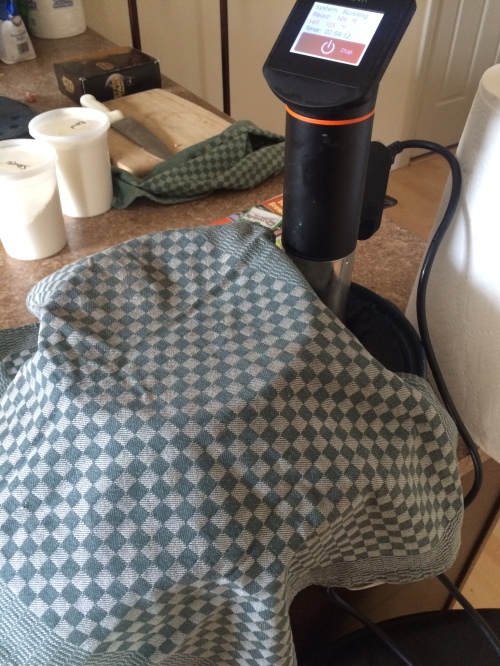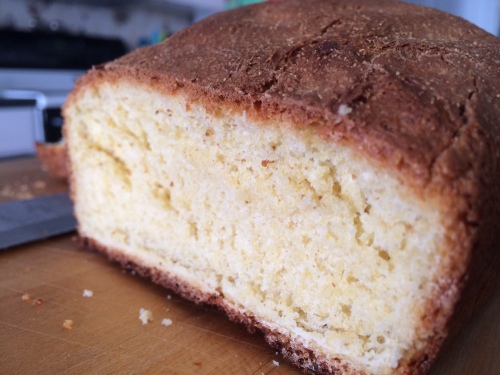As we make our way into the second half of Reddit’s 52 Weeks of Cooking Challenge, we take on a subject of great debate. Depending where your own culinary experience and background, creating dishes from scratch may or may not seem such a daunting task. Since the industrialization of the American food system in the early 20th century, recipes and cookbooks developed to rely on ready-made ingredients to ease the burden place on home cooks, and free up more time for whatever else they wanted to do. So nowadays, it’s often “a box of this, two cans of that”, and it’s just like mom used to make. And sometimes, utilizing processed ingredients will actually yield better results. I briefly worked with a chef who boasted that everything was made from scratch except ketchup, because “you can’t make ketchup better than Heinz” (a statement which I debate with myself constantly), and I can tell you from experience that at Thanksgiving time, a from-scratch Green Bean Casserole doesn’t hold a candle to opening a can of mushroom soup and French’s Fried Onions. Many cooks grew up accustomed to these kinds of dishes, so when you do the recipe totally from scratch, it almost feels more like more of an accomplishment. Reaching for flour and cocoa rather than a box of brownie mix is definitely more rewarding, if not a bit more time consuming.
On the opposite side of things, in professional kitchens, if you’re not doing your menu nearly entirely from scratch, it’s viewed as lazy. In the modern restaurant, from scratch is just how things are done. It’s more work, but it sets you apart from lower-end establishments. And with margins as slim as they are already, customers aren’t interested in paying for things they can buy at the grocery store.
I think I land somewhere in the middle of this paradigm: As a professional cook, I have the mentality of wanting to everything from scratch, even when I cook at home. But a lot of times, you can’t do at home what you can do in a working kitchen, and it’s costly to try at that. But, there are definitely things that you can do at home pretty easily and cheaply to give yourself the accomplished DIY feeling we all long for.
The late, great Carl Sagan once said “If you wish to make an Apple Pie from scratch, you must first invent the universe”. It’s comment on how the constituent particles that make up the world around us all had to have come from somewhere else, and we’re just kind of rearranging things that are already here. Even with my professional background, I think creating the universe to make a pie is a bit out of my range, but Apple Pie can be a good jumping-off point.

So to make is as from-scratch as possible, I decided that there were really just two things I could do out of the ordinary:
Grind My Own Flour: Luckily, the bulk section at the supermarket carries whole wheat berries, so it was just a matter of picking some up and grinding it as finely as possible. You can buy countertop grain mills for home use (which I’ve read are pretty effective), or if you have access to a high-power blender, that works pretty well too. Either way, I really wouldn’t suggest doing this, at least for a pie crust. The resulting product is incredibly coarse, and as you can see in the photo above, yields a very crumbly crust, closer to a cobbler than a pie. The flavor was alright, but the texture was way off. In any case, it was something I had never tried before, so even the negative results are beneficial.
Make My Own Butter: This one is actually super simple for anyone to do at home. All it involves is cream and agitation, maybe some salt if you want to, but that’s it. Just add cream to the bowl of a stand mixer or food processor and whip the shit out of it. It will begin to thicken to whipped cream consistency and eventually break into solid butterfat and liquid buttermilk. Collecting the small yellow lumps of butterfat into a mass and squeezing any residual liquid out of it yields an immensely rich and creamy butter that will function exactly the same as the store bought variety.
So really, the crust was the biggest thing done from scratch, and it was kind of a letdown overall. However, I used Alton Brown’s Super Apple Pie recipe for the filling and was blown away by the results. Largely the same as most filling recipes, the big differences here are lime juice and Grains of Paradise, a spice commonly used in English baking . Unless you’ve got a homebrew store nearby, you’re unlikely to come across Grains of Paradise. Black Pepper is a great substitute, which I used myself, and provides some really interesting savory notes to an otherwise very sweet dessert.
So, the lesson learned here? Don’t grind your own flour for pie crust, but definitely make your pies from scratch.












